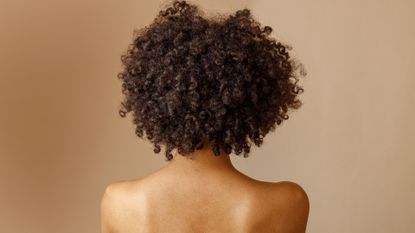

Hate to say it, but anywhere you have skin, you can have acne. Sure, the face is the most talked-about location, but it’s also pretty damn common to experience breakouts on your back. While one of the best spot treatments can certainly tackle a spot or two, you’re going to need to make bigger changes to your overall routine to actually get rid of bacne. The good news: There’s a pretty hard and fast formula for calming down body acne.
For some, nixing bacne may be as simple as showering after working up a sweat. For others? You might need to pay a visit to your dermatologist and get on a prescription regimen. To get the full breakdown on bacne, keep reading. Board-certified dermatologist Dr. Nkem Ugonabo explains everything you need to know.
What Is Bacne?
“Back acne is often used as a catch-all term that refers to breakouts on the body,” says Dr. Ugonabo. And, just like acne on the face, it can present differently on different people. You may have blackheads and whiteheads, cysts, or inflamed red bumps.
But there’s a catch. Sometimes, the bumps on your back aren’t actually acne at all. “There are other ‘breakouts’ that can mimic acne because they look like pimples,” says Dr. Ugonabo. “You could have folliculitus, which refers to inflamed hair follicles that are caused by the buildup of sweat and dirt.” There’s also the chance that your bumpy back is indicative of a follicle-blocking skin condition called keratosis pilaris (KP).
How to Treat Back Acne
If you have mild or moderate bacne (think: whiteheads, blackheads, and some red bumps), you’ll probably be able to manage your breakouts with over the counter products and a few lifestyle changes. But, if your body breakouts are painful or more severe, make sure to touch base with your board-certified dermatologist.
Don’t Pop and Pick
This should go without saying, but don’t start squeezing, popping, and picking your pimples. It’s going to introduce new bacteria, can lead to infection, and quite frankly, will make matters worse. “This is only going to increase your risk for dark spots, hyperpigmentation, and scarring.”
Avoid Tight Clothing
If you’re dealing with folliculitis, friction against the skin is only going to perpetuate the problem. And if it’s actually acne? Rubbing is going to contribute to inflammation. As such, Dr. Ugonabo says your best bet is to reach for water-resistant, sweat-wicking, loose clothing.
Don’t Sit in Sweat
“Waiting too long to shower after a workout can increase the likelihood of a breakout,” says Dr. Ugonabo. As soon as you wrap up your gym session, take a quick rinse. While a full shower complete with one of the best salicylic-acid body washes is certainly ideal, it’s sometimes not practical in the moment. If you’re in a pinch post-sweat, give your body a rub down with a cleanser wipe.
Switch Up Your Shower Routine
Take a long, hard look at your shampoo and conditioner. They could be to blame for your breakouts. As you wash your hair, the product runs down your back. If the products aren’t formulated with acne-prone skin in mind, they could end up clogging pores. Make sure to look for shampoos and conditioners that are free oils and labeled non-comedogenic.
Dr. Ugonabo also recommends adding some treatment products to your shower routine via a body wash. “I like ingredients such as benzoyl peroxide, salicylic acid, and glycolic acid,” she adds. Products with these ingredients should help clear up breakouts, but it won’t happen overnight. Give them a good six weeks to start working.
Talk to a Dermatologist
“If you’ve tried over the counter products, but the acne isn’t improving or is getting worse, I highly recommend seeing a board-certified dermatologist,” advises Dr. Ugonabo. She adds that a dermatologist will A.) be able to confirm that you are in fact dealing with back acne and not something else entirely, and B.) write you a script for a prescription medication. In some cases, your doctor will recommend a topical wipe or cream such as clindamycin. In others, they’ll suggest oral antibiotics, like doxycycline.
The Best Products to Get Rid of Body Acne
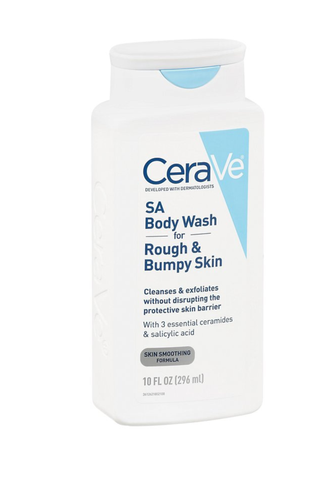
Dr. Ugonabo is a big fan of this wash because it’s less irritating than other over-the-counter options. “Some other salicylic acid washes can be harsh on the skin, but this formula from CeraVe includes ceramides, which help it make it a gentle exfoliant and less likely to cause irritation.”
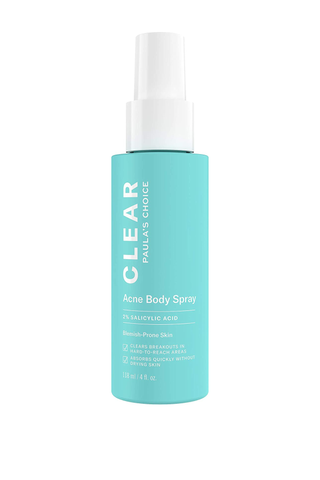
Continuing your acne-fighting routine after you shower with this body spray. It’s formulated with salicylic acid to help unclog pores and treat existing breakouts. The best part? The spray makes it ideal for getting product on hard-to-reach areas.
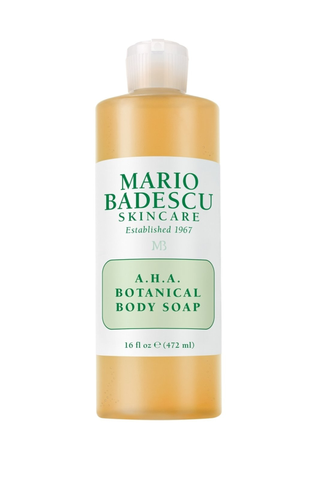
If you’re a long-time fan of the brand’s drying lotion for pimples on your face, you’re going to love this body wash for body acne. It’s formulated with glycolic acid to exfoliate the skin and slough away dead cells. This one is going to be a bit gentler than salicylic acid alternatives, making it a must for anyone with sensitive skin.

If you go to the dermatologist, this is most likely going to be one of the products they recommend. It’s a no-frills option that contains all the goods (read: salicylic acid) and none of the no-no ingredients (think: oils). It can be a little drying though, so try to follow up with a moisturizer for acne-prone skin.
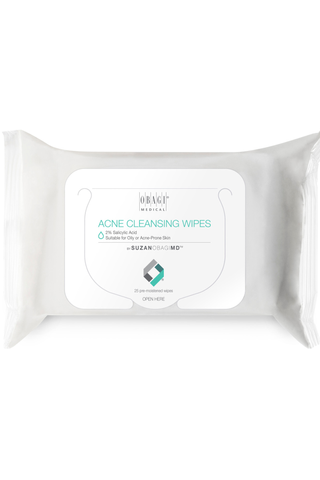
If you’re not a fan of showering at the gym, we beg you: Toss these towelettes in your bag. They’re the next-best thing to an actual bath. They have salicylic acid (sensing a theme here), as well as witch hazel to fight breakouts. Give yourself a good wipe down and then hop in the shower at your earliest convenience.
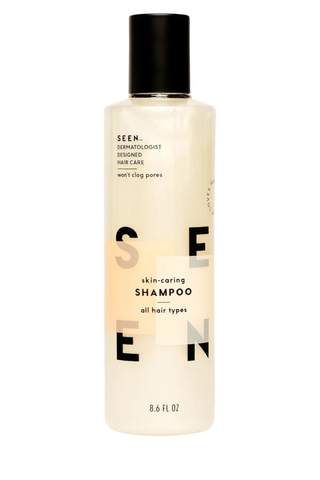
This derm-formulated shampoo was made specifically with face and body acne in mind. Nothing on its ingredient list will contribute to breakouts (read: no fragrance, no oils), so you can wash your hair without worry.
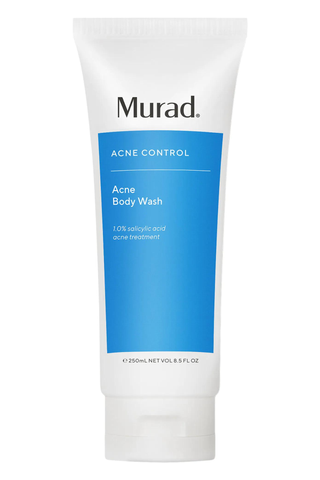
For a body wash that gives long-lasting results, Murad is the way to go. It’s going to give you a deep clean in the moment, but thanks to an ingredient called triclosan, it’s also going to kill acne-causing bacteria throughout the day.
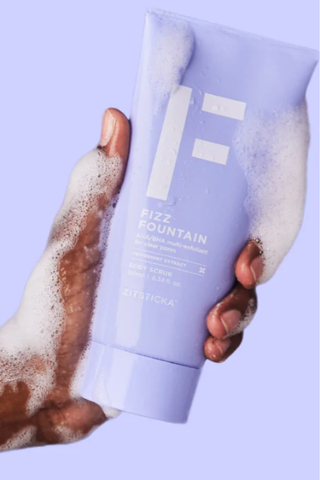
Looking for a little extra something-something to add to your routine? Scoop up this super-charged body scrub. It has salicylic acid (of course), as well as lactic and glycolic acids to get rid of all the gunk and dead cells that have accumulated on your skin. It also features one of our all time fave ingredients, niacinamide, to help with redness and inflammation.
Meet the Expert

Dr. Ugonabo is a native New Yorker who received her Bachelor of Arts in Human Biology from Stanford University. She then worked as a management consultant at McKinsey & Company before completing her Master of Public Health degree at Harvard and her M.D. degree at the University of Michigan. She returned to the New York area for her Dermatology Residency at the prestigious NYU Medical Center where she was appointed Chief Resident in her final year. During residency, she served on several institutional committees and was selected to serve as Chair of the Housestaff Patient Safety & Quality Improvement Committee. She also extensively pursued research involving the laser treatment of pigmented lesions, patient safety, combination treatments involving filler and lasers, and the mental health of acne patients taking Accutane. At residency graduation, she was awarded the Dr. Irwin Freedberg award for the resident who best represents the field of dermatology in the world of medicine. Following residency, Dr. Ugonabo was an American Society for Dermatologic Surgery (ASDS) Cosmetic Dermatologic Surgery Fellow at UnionDerm in New York City where she worked as a sub-investigator on multiple clinical trials investigating the treatment of acne scars, photodamage, cellulite, muscle stimulation and melasma.
Dr. Ugonabo has published numerous articles in peer-reviewed journals including the Journal of American Medical Association Surgery, Journal of the American Academy of Dermatology, Dermatologic Surgery, Journal of Cosmetic Dermatology, British Journal of Dermatology and Journal of Drugs in Dermatology. She has presented at numerous national and local meetings including the American Academy of Dermatology (AAD) Annual Meeting, American Society for Laser Medicine and Surgery (ASLMS) Annual Conference, American Society for Dermatologic Surgery (ASDS) Annual Meeting and Winter Clinical Dermatology Conference.
Stay In The Know
Marie Claire email subscribers get intel on fashion and beauty trends, hot-off-the-press celebrity news, and more. Sign up here.

Samantha Holender is the Beauty Editor at Marie Claire, where she reports on the best new launches, dives into the science behind skincare, and keeps up with the latest trends in the beauty space. She has previously written for Us Weekly, Popsugar, Makeup.com, Skincare.com, and Philadelphia Wedding. Follow her on Instagram @samholender.
-
 Kate Hudson Says It was “Very Dramatic” On the ‘Glee’ Set
Kate Hudson Says It was “Very Dramatic” On the ‘Glee’ Set“… when you’ve got all of those personalities and all that talent and all that youth and a lot of hormones…”
By Danielle Campoamor Published
-
 The Most Iconic Hats and Fascinators Worn by Royal Wedding Guests
The Most Iconic Hats and Fascinators Worn by Royal Wedding GuestsThe bigger, the better.
By Katherine J. Igoe Published
-
 Zendaya Says Her Experiences at the Met Gala Have Been “Exciting”—But Also “Terrifying” and “Daunting”
Zendaya Says Her Experiences at the Met Gala Have Been “Exciting”—But Also “Terrifying” and “Daunting”After a five year hiatus, Zendaya will return to the Met this year as a co-chair of the event.
By Rachel Burchfield Published